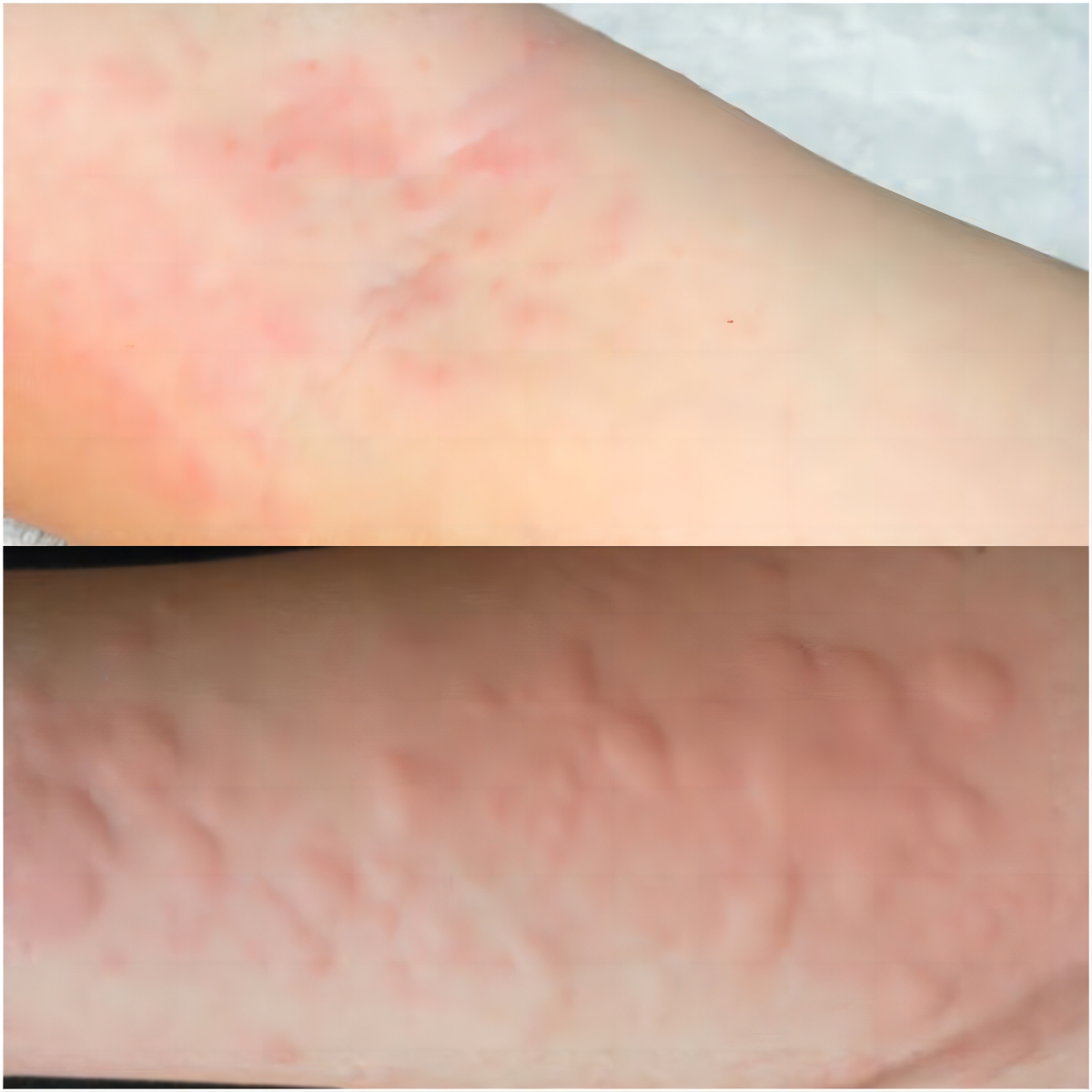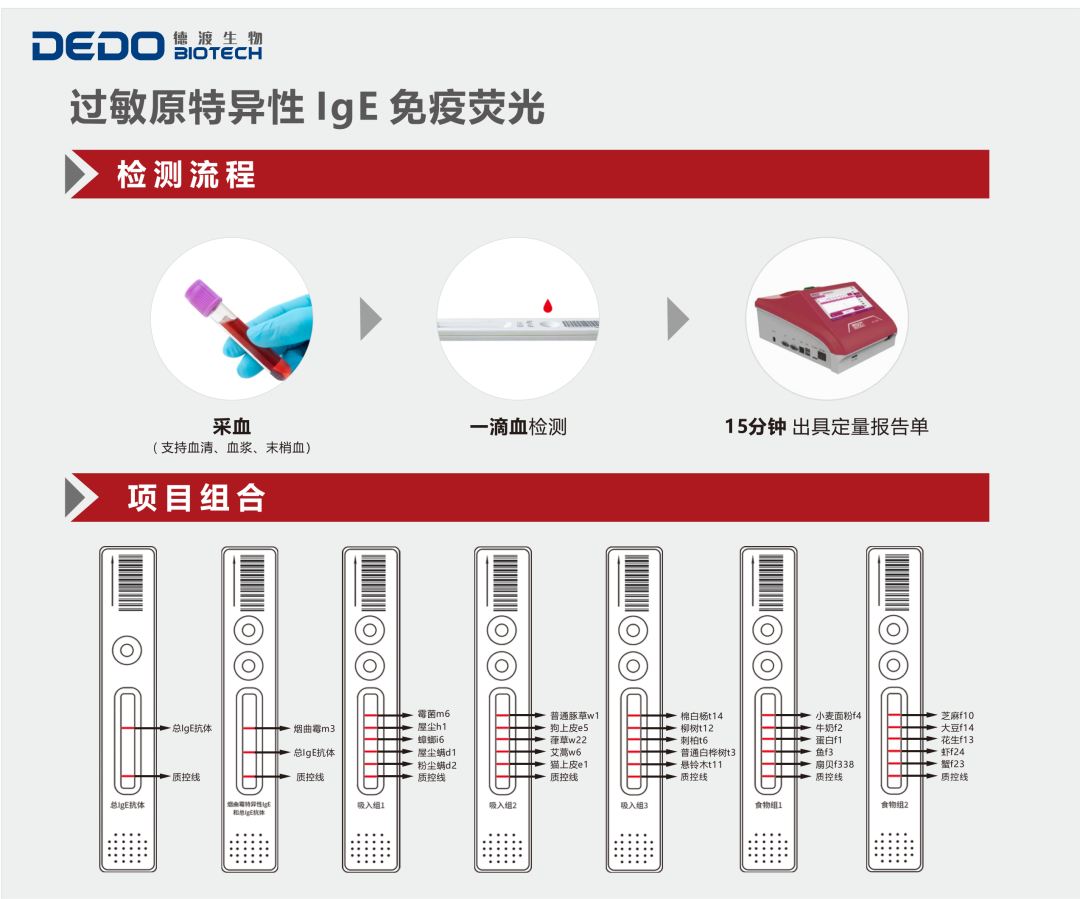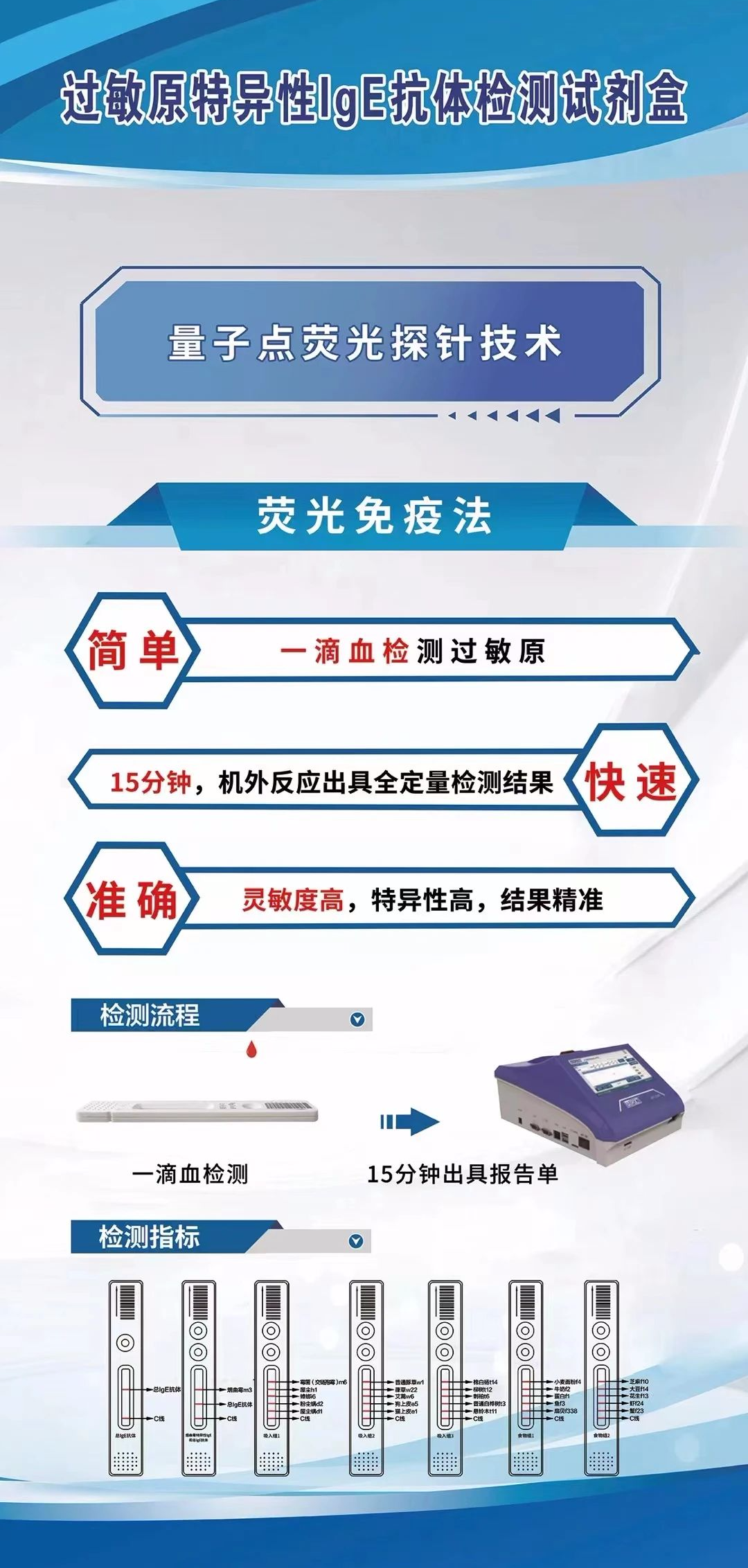In recent years, the term "allergy" has become increasingly familiar to everyone. "Allergic dermatitis, eczema, atopic dermatitis, contact dermatitis, hair dye dermatitis, cosmetic dermatitis..." More and more people in daily life are troubled by allergic problems, but little is known about the culprits that cause their allergies.

In fact, different detection methods are used for different allergens. For immediate allergic reactions such as urticaria and allergic rhinitis, blood tests can be conducted to detect allergens. The types of allergens detected are mainly inhalation allergens such as pollen, dust mites, fungi, and common food allergens.

So diseases like eczema, some drug rash, and allergic contact dermatitis mostly belong to delayed type allergic reactions, and their allergens are mostly chemical substances, such as p-phenylenediamine in hair dyes or nickel in metals or chemical components in drugs. How should this type of allergen be detected? The detection of such allergens is not a diagnostic skin patch test!
Patch test
Patch test is a primary diagnostic method for delayed type (type IV) hypersensitivity, used to determine the presence of contact hypersensitivity in patients and evaluate the association between allergens in contact and the occurrence of dermatitis.
Why do we conduct patch tests?
1. Auxiliary diagnosis: Allergic contact dermatitis is a common allergic disease in clinical practice, and relying solely on medical history and physical examination is not sufficient to establish a comprehensive diagnosis. Patch tests can fully evaluate the patient's contact allergens and their sensitization status.
2. Clarify allergens: Patch testing is the gold standard for identifying and clarifying contact allergens.
3. Shortening the course of the disease: In cases where the allergen is unknown, patients may repeatedly come into contact with the allergen, leading to recurrent episodes of contact dermatitis. Patch test helps to shorten the diagnosis time of patients and improve the diagnosis rate; Thus guiding patients to effectively avoid allergens and improve their quality of life.
4. Good objectivity: The patch test is less affected by factors such as drugs, self metabolism, or other systemic diseases, and can objectively reflect the true results; The patch test has a unified and clear interpretation standard, good consistency of results, and can reduce measurement bias; In addition, the patch test may not rely on the chief complaint symptoms, and can objectively reflect the allergic results regardless of whether the patient experiences an allergic reaction.
Suitable population
1. Suspected contact allergy (eczema): dermatitis and eczema are common in areas that are prone to contact with allergens (such as hands and faces), especially after exposure to certain substances; In addition, other types of dermatitis that recur can also be tested.
2. There is a need for allergen testing: Although there have been no cases of dermatitis or eczema, people who want to know their own contact allergen situation due to occupational characteristics (such as frequent contact with metals, rubber, hair dyes, etc.) or lifestyle habits (such as frequent use of cosmetics and toiletries).

[Tip: It is recommended that patients understand their own allergens (patch test) before implanting medical implants such as oral fillers (dentures, fillings, etc.), contraceptive devices (contraceptive rings, etc.), cardiovascular materials (heart stents, artificial valves, etc.), orthopedic materials (steel nails, steel plates, artificial joints, etc.), etc., to prevent possible allergic reactions in the future.]


